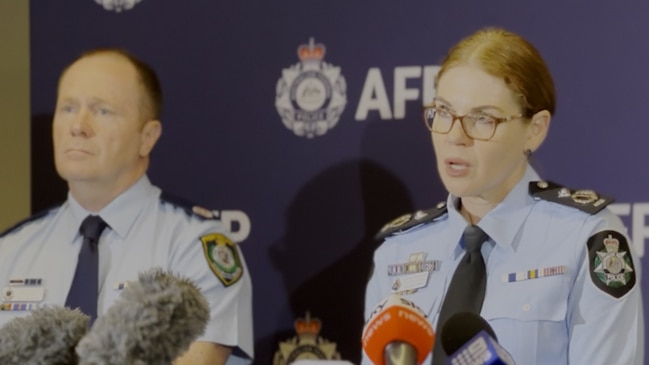How to teach your child to indentify unsafe behaviour
I recently discovered that the man who offended against me is serving a prison sentence in another state for abusing another child 25 years after me, writes Anna Bowden.

Opinion
Don't miss out on the headlines from Opinion. Followed categories will be added to My News.
Yesterday I found myself sitting in a primary school hall with tears streaming down my face as I watched my daughter and her friends on stage singing You Are My Sunshine.
“Why are you crying, Mummy?” asked her four-year-old sister sitting next to me. “These are happy tears, darling,” I said.
But they weren’t happy tears at all. Twenty-four hours earlier, my personal and work life had been filled with the most horrendous news about the alleged abuse of 91 children by a former childcare worker.
Even though I spend every day working towards better detection and reporting of child sexual abuse, I found this news acutely difficult to deal with. At that moment, my fear for my two young daughters’ safety was overriding everything.
As it was for the innocence of the hundreds of little children singing “please don’t take my sunshine away”.
At work, I have no issues articulating the horrific problem of child abuse or encouraging people to lean into it.
But I also know that, as a parent, I need to equip my girls with the right information to help them to identify unsafe behaviour and to speak up if they encounter it.
But where do you start this conversation with a four and five-year-old?
Luckily, I know some of the most respected brains in the industry, and I reached out to my colleague, Dr Deirdre Thompson, director of therapeutic and support services at Bravehearts.
Deirdre helped me understand how important it is to start this conversation with the girls now, and to approach it a little like we do other discussions, like road safety, making sure it isn’t a one-off conversation. We teach our children to hold our hand when we cross the road and wear a helmet when riding a bike.
We can approach this in the same way by using age-appropriate language that evolves as they get older, and creates opportunities to keep the conversation going.
Another key point Deirdre made was that it’s imperative not to make our children embarrassed or ashamed about sexuality or body parts, and to use correct names. I think I speak for many when I say that we are the ones who are awkward and embarrassed here. But, it’s time to properly articulate these things. I think the most important piece of advice Deirdre gave me was that I need to educate myself on the signs and indicators of potential abuse so that I can talk to the girls if I suspect something may be wrong, and know what to do if they ever were to disclose anything. We can’t just leave it up to them to keep themselves safe, that’s our responsibility.
Child sexual abuse is an incredibly difficult subject for people and for many it can be potentially triggering if they’ve also experienced it. But, as a victim-survivor myself, I know I don’t have to do this alone. Organisations like Bravehearts have resources and a support line.
If I could leave you with one final thought, it’s that we need to listen to and believe children if they disclose to us.
I recently discovered that the man who offended against me is serving a prison sentence in another state for abusing another child 25 years after me. While I tried to communicate what had happened to me over the years, I couldn’t find the words or the people to believe me. If I had, how many other children could have escaped his abuse?




